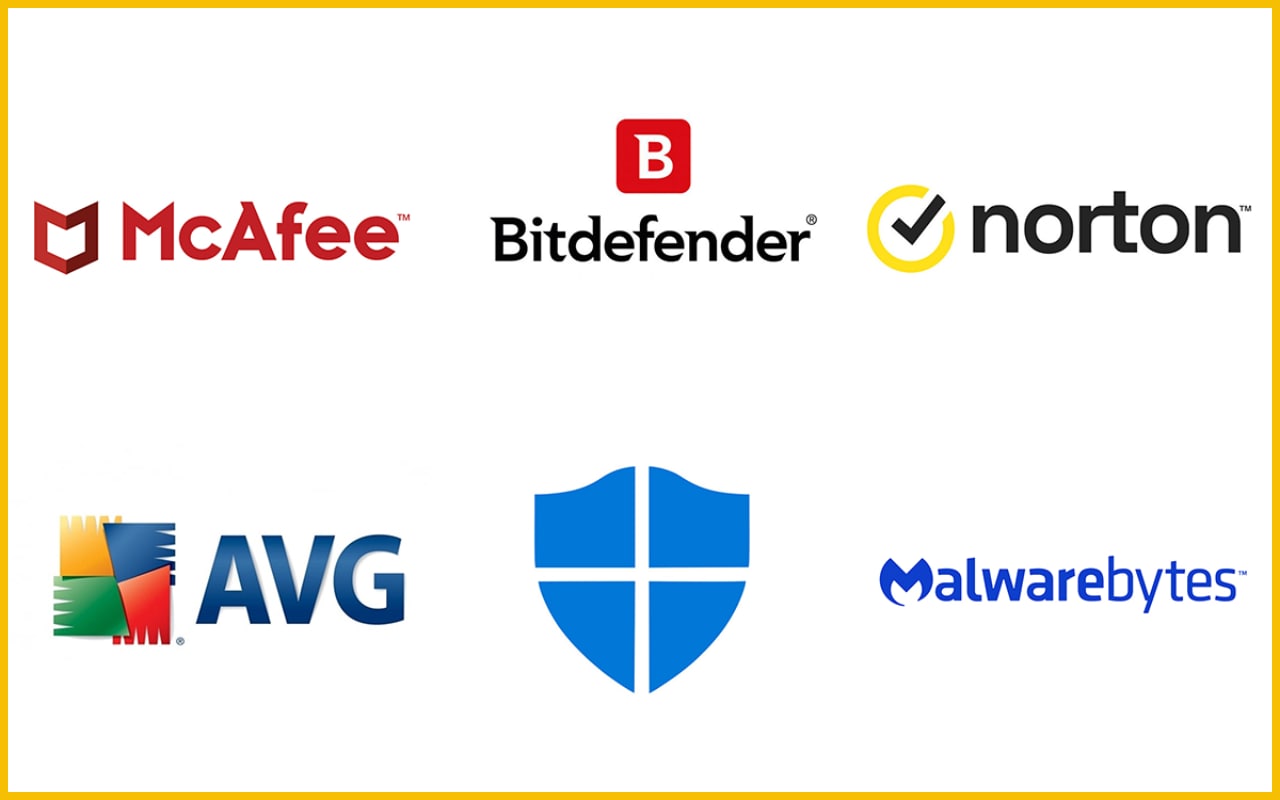Exploring the World of Metaverse Developments: A Comprehensive Guide

The concept of the Metaverse has transitioned from a speculative sci-fi vision to a burgeoning reality, thanks to rapid advancements in technology and significant investments from global tech giants. This blog post delves into the current state of Metaverse developments, exploring the innovative technologies and applications that are defining this new digital frontier. Join us as we uncover how these developments are set to revolutionize the way we interact, work, and play in virtual spaces.
Table of Contents
Understanding the Metaverse
The term “Metaverse” is rapidly becoming a central piece in the dialogue surrounding future technologies, yet its concept often eludes precise definition due to its broad and evolving nature. Derived from the Greek word “meta” (meaning beyond) and “universe,” the Metaverse refers to a collective virtual shared space created by the convergence of virtually enhanced physical and digital reality. It is persistent, providing a sense of lived experience that mimics aspects of the natural world but in a fully digitized environment.
The Concept and Its Evolution
Origin of the Metaverse: The idea of the Metaverse first appeared in Neal Stephenson’s 1992 science fiction novel “Snow Crash,” where humans, as avatars, interacted with each other and software agents in a three-dimensional virtual space that uses the metaphor of the real world. This concept has since evolved beyond a fictional narrative into a potential future framework for the internet, dubbed Web 3.0, which aims to create a decentralized network of interactive environments and virtual economies.
Evolution into a Technological Vision: As technology has advanced, the vision of the Metaverse has expanded. It now encompasses a future iteration of the internet, supporting a wide array of real-time interactive 3D virtual worlds. These worlds are connected in a perceived virtual universe, accessible through VR and AR. This includes not only gaming and social media platforms but also extends to sectors like education, remote work, real estate, and more, where users can interact in environments that merge the real with the virtual.
Core Technologies Driving the Metaverse
Virtual Reality (VR): VR is pivotal in creating immersive experiences in the Metaverse. It enables users to engage deeply with a simulated environment, often using headsets that fully enclose the vision and usually integrate audio and haptic feedback, enhancing the sense of presence in the virtual world.
Augmented Reality (AR): AR technology overlays digital information in the real world and is accessible via smartphones and dedicated AR devices. This technology is crucial for the Metaverse as it allows for the seamless integration of real-world elements into digital experiences, enhancing user interaction with both physical and virtual environments.
Blockchain Technology: Blockchain supports the decentralized aspect of the Metaverse, providing a framework for creating and maintaining a secure and decentralized record of ownership. This is essential for managing virtual real estate, digital assets, and identity verification within the Metaverse. Blockchain also facilitates cryptocurrency transactions, which are often used in these virtual environments.
These foundational technologies are constantly evolving and are critical in shaping the structure and functionality of the Metaverse. Together, they not only define the interactive experience but also ensure security, immersiveness, and continuity of the digital and virtual worlds that make up the Metaverse. As we continue to explore and expand these virtual spaces, understanding these core technologies and their applications will be crucial in realizing the full potential of the Metaverse.
The Concept and Its Evolution
Origin of the Metaverse Concept
The Metaverse concept was first introduced in Neal Stephenson’s seminal science fiction novel, “Snow Crash,” in 1992. Stephenson envisioned a virtual reality space where people, represented as avatars, could interact with each other and software agents in a fully immersive digital environment. This early depiction planted the seeds for what many now anticipate as the next significant frontier in internet and technology development.

Transition from Fiction to Technology Vision
The journey from a literary concept to a technological blueprint began in earnest as advances in internet technology, virtual reality, and computer graphics converged. Early virtual worlds like Second Life and video games such as World of Warcraft provided glimpses of what a Metaverse could look like: spaces where users could interact, create, and trade in environments that paralleled the physical world but were bound only by the limits of imagination.
Web 2.0 and the Seeds of a User-Generated Universe
As Web 2.0 unfolded, it brought with it a new level of interactivity—user-generated content became the norm, social networks connected billions, and online economies were established. Platforms like Minecraft and Roblox turned gamers into creators, not just consumers, paving the way for more sophisticated Metaverse concepts. These platforms demonstrated the potential for massive, user-driven spaces where the boundaries between creators and users blurred, empowering users to shape their digital environments.
The Role of Augmented Reality and Virtual Reality
The development of virtual reality (VR) and augmented reality (AR) technologies provided the necessary tools to make Metaverse experiences more immersive. VR headsets like Oculus Rift and HTC Vive allow users to step into entirely virtual worlds, offering an escape from physical reality into digital realms. Simultaneously, AR technologies found in devices like Microsoft HoloLens and ARKit for iOS enabled the overlay of digital information onto the real world, creating a hybrid space where digital and physical realities coexist.
Blockchain: Enabling Decentralization
Blockchain technology emerged as a critical enabler for the Metaverse by facilitating a decentralized architecture, which is crucial for managing digital asset ownership, identity, and security without centralized control. Cryptocurrencies and non-fungible tokens (NFTs) became mediums for transaction and ownership, ensuring that users could own, buy, and sell digital assets with verifiable proof of ownership. This technology also introduced the possibility of decentralized governance models within the Metaverse, where communities could make decisions democratically and transparently.
Current State and Future Potential
Today, the Metaverse is seen not just as a series of disconnected virtual realities but as a unified, interoperable domain where next-generation internet applications and digital economies come to life. Major tech companies like Meta (formerly Facebook), Google, and Microsoft are investing billions into Metaverse infrastructure, betting on its potential to become the next big platform for everything from entertainment and education to remote work and beyond.
The evolution of the Metaverse reflects a growing desire for more immersive, interconnected digital experiences. As technologies continue to advance, the Metaverse is likely to become a significant part of daily life, reshaping how we interact with technology and each other in profound ways. This ongoing evolution will undoubtedly open new avenues for creativity, economic opportunity, and social interactions as the boundaries between the digital and physical worlds continue to blur.
Core Technologies Driving the Metaverse
- Virtual Reality (VR)
- Augmented Reality (AR)
- Blockchain Technology
The Current Landscape of Metaverse Developments
As we edge more profoundly into the 21st century, the Metaverse continues to evolve from a niche concept into a broad ecosystem where technology, culture, and social interaction intersect. The landscape of Metaverse developments is characterized by rapid growth, driven by advancements in technology and significant investments from tech giants and startups alike.

Major Players and Their Contributions
Several key players are shaping the current landscape of the Metaverse, each bringing unique contributions that push the boundaries of what virtual worlds can achieve:
- Meta Platforms (Formerly Facebook): With the rebranding to Meta, the company has solidified its commitment to developing the Metaverse, pledging to invest billions in this virtual ecosystem. Meta is focusing on creating a fully immersive digital environment where people can connect, work, and play, leveraging its extensive social network as a foundation.
- Microsoft: Leveraging its mixed reality platform, Microsoft Mesh, and its enterprise-grade cloud solutions, Microsoft is focusing on collaborative experiences in the Metaverse. This includes virtual meetings and collaborative spaces that integrate seamlessly with its productivity tools, aiming to transform how businesses interact and operate.
- Google: Although more subtle in its Metaverse approach, Google has been integrating augmented reality technologies across its services, such as Google Maps and search functions. It is also enhancing its cloud computing technologies to support the backend of expansive virtual worlds.
- Nvidia: As a leader in graphics processing units (GPUs), Nvidia is crucial to rendering the complex visual content of the Metaverse. Beyond hardware, Nvidia’s Omniverse platform is a collaborative tool designed to create and operate shared virtual spaces in real time for creators, designers, and developers.
Emerging Trends in 2024
The year 2024 is seeing specific trends that are likely to influence the development of the Metaverse significantly:
- Integration of AI and Blockchain: AI is becoming fundamental in creating responsive, intelligent environments that enhance user interaction within the Metaverse, while blockchain technology underpins the digital economy, supporting everything from cryptocurrency transactions to the creation and enforcement of smart contracts.
- Rise of Digital Real Estate: Virtual real estate is becoming a booming market within the Metaverse, with platforms like Decentraland and The Sandbox leading the way. These platforms allow users to buy, sell, and develop virtual land, creating opportunities for investment and innovation in digital spaces.
- Advances in Interactivity and Immersive Experiences: Enhanced by VR and AR technologies, the Metaverse is becoming more immersive. New VR headsets with improved resolution and field of view, along with AR apps that blend digital content seamlessly with the real world, are making these experiences more rich and engaging.
Challenges and Considerations
Despite its potential, the development of the Metaverse faces several challenges:
- Scalability: As more users join Metaverse platforms, scaling these environments while maintaining performance and interactivity remains a significant technical challenge.
- Privacy and Security: As data exchange within these digital worlds increases, ensuring user privacy and securing data against breaches is increasingly critical.
- Regulatory and Ethical Issues: As digital economies grow, issues such as digital ownership, copyright laws, and the ethical implications of virtual interactions become more complex.
- Accessibility: Ensuring that these advanced, resource-intensive platforms are accessible to a broad audience, including those with limited access to cutting-edge technology, is a growing concern.
The current landscape of Metaverse developments presents a complex mix of opportunities and challenges. As businesses and creators continue to explore this nascent space, the Metaverse is set to redefine the digital interaction paradigm, promising a future where the digital and physical worlds are indistinguishably intertwined.
Major Players and Their Contributions
- Meta Platforms
- Nvidia
- Microsoft
Emerging Trends in 2024
- Integration of AI and Blockchain
- Rise of Digital Real Estate
- Advances in Interactivity and Immersive Experiences
Navigating Through Challenges
As the Metaverse evolves into a complex and influential digital platform, it faces a range of technical, ethical, and social challenges. Addressing these obstacles is crucial for sustainable development, ensuring user safety, and promoting widespread adoption.
Technical and Ethical Hurdles
- Scalability Issues: One of the most significant technical challenges in the Metaverse is scalability. As virtual environments grow in size and complexity, maintaining performance without sacrificing quality or user experience becomes increasingly tricky. Ensuring these environments can support millions of users simultaneously, each with unique interactions and transactions, requires robust infrastructure and innovative solutions.
- Privacy and Security Concerns: The Metaverse collects and utilizes vast amounts of personal data to create immersive and personalized experiences. This raises substantial privacy concerns, as sensitive information must be protected from unauthorized access and breaches. Additionally, security challenges such as data integrity, user authentication, and the prevention of cyber-attacks are paramount to trust and safety in these virtual spaces.
Social and Economic Implications
- Impact on Traditional Businesses: As the Metaverse provides alternative realities for shopping, entertainment, and socializing, traditional businesses must adapt or risk obsolescence. This digital transformation may lead to displacement in some industries while creating opportunities in others, fundamentally altering economic landscapes and labour markets.
- Regulatory and Governance Challenges: The Metaverse operates in a space that transcends traditional geographic and jurisdictional boundaries. This poses significant challenges for regulation and governance, as existing laws may need to adequately address issues unique to virtual environments, such as digital ownership, the use of virtual assets, and behaviour in digital spaces. Crafting regulations that protect users while fostering innovation requires international cooperation and a deep understanding of emerging technologies.
- Social Implications: The immersive nature of the Metaverse poses unique social challenges. Issues such as digital addiction, the blurring of lines between reality and simulation, and the potential for harassment or harmful behaviour in virtual spaces need to be addressed. Ensuring that the Metaverse contributes positively to social interaction without undermining physical-world relationships is a delicate balance.
Strategies for Overcoming These Challenges
- Developing Robust Infrastructure: To tackle scalability, significant investment in cloud computing, edge computing, and network infrastructure is necessary. These technologies can distribute processing tasks more efficiently and reduce latency, providing a smoother and more scalable user experience.
- Enhancing Security Measures: Adopting advanced cybersecurity measures, such as end-to-end encryption, secure authentication methods, and regular security audits, can help protect user data and ensure privacy. Furthermore, blockchain technology could play a crucial role in enhancing security and transparency, particularly concerning transactions and user identities.
- Creating Ethical Guidelines and Standards: Developing a set of ethical guidelines and standards specific to Metaverse interactions can help address potential social and moral issues. These guidelines should promote inclusivity, respect, and fairness and provide clear consequences for violations.
- Engaging with Regulatory Bodies: Proactively engaging with policymakers and regulatory bodies to shape the legal landscape can ensure that the Metaverse adheres to societal norms and legal standards. This includes discussions on data protection, intellectual property rights, and virtual commerce.
- Promoting Digital Literacy and Etiquette: Educating users about digital literacy, including the responsible use of technology, privacy management, and the nuances of virtual interaction, is crucial. This education can help users navigate the Metaverse responsibly and safely, enhancing the overall experience for all participants.
Navigating these challenges effectively requires a multifaceted approach involving technological innovation, regulatory foresight, ethical considerations, and community engagement. By addressing these issues head-on, developers and stakeholders can help ensure that the Metaverse reaches its full potential as a safe, inclusive, and revolutionary digital environment.

Technical and Ethical Hurdles
- Scalability Issues
- Privacy and Security Concerns
Social and Economic Implications
- Impact on Traditional Businesses
- Regulatory and Governance Challenges
Opportunities Unleashed by Metaverse Developments
The rapid development of the Metaverse opens a treasure trove of opportunities across various sectors, from creating new business models to revolutionizing traditional industries. As the digital and physical realms increasingly intertwine, the Metaverse is poised to become a critical platform for innovation, economic growth, and social connectivity.
New Business Models and Revenue Streams
Virtual Goods and Services: The Metaverse enables the creation and trade of virtual goods and services, from digital fashion to virtual real estate, which can be monetized in new and innovative ways. This includes everything from virtual clothing for avatars to premium content like exclusive access to virtual events or environments. As users spend more time in virtual spaces, the demand for these goods and services will likely increase, opening up vast markets for creative and entrepreneurial ventures.
Metaverse Marketing Strategies: Businesses can leverage the Metaverse to launch immersive marketing campaigns that engage users in ways that are not possible in the physical world. This includes virtual product launches, interactive brand experiences, and personalized advertising tailored to user preferences and behaviours within the Metaverse. Such strategies enable deeper engagement and brand loyalty, providing a competitive edge in both virtual and physical marketplaces.
Enhancing Connectivity and Collaboration
Global Workspaces: The Metaverse offers a platform for creating virtual workspaces that transcend geographical boundaries. Companies can harness this capability to build international teams that can collaborate in real-time within virtual offices. These spaces can be designed to enhance creativity and productivity, incorporating tools and features that are not constrained by physical limitations.
Virtual Events and Conferences: By hosting events in a virtual environment, organizations can reach a global audience without the logistical and financial burdens associated with physical events. This not only makes events more accessible but also allows for a level of interaction and immersion that can surpass traditional formats. Virtual trade shows, conferences, and networking events in the Metaverse can include 3D product demonstrations, real-time interaction with speakers, and personalized content, enhancing the participant experience and extending reach.
Transforming Education and Training
Immersive Learning Environments: The Metaverse provides an opportunity to transform educational methodologies through immersive learning experiences. Virtual classrooms can simulate real-world scenarios that would be impossible or impractical to recreate physically, such as historical events, scientific simulations, or global social interactions. This can lead to enhanced understanding and retention of knowledge and skills.
Professional Development and Training: Businesses can utilize the Metaverse for training and development, creating simulations that allow employees to gain practical experience in a risk-free environment. For example, medical professionals can perform virtual surgeries, or engineers can test their designs under different conditions, facilitating learning and innovation without the physical resources typically required.
Societal Impact
Cultural Exchanges and Social Inclusion: The Metaverse can act as a melting pot of cultures, enabling people from all over the world to interact and share their cultural heritage in ways that promote understanding and inclusiveness. Virtual social spaces can host cultural events, art exhibitions, and language classes, accessible to anyone with internet access.
Enhancing Accessibility: For individuals with mobility issues or other disabilities that limit their access to physical experiences, the Metaverse can offer a level of interaction and participation that the real world cannot. Whether it’s attending virtual concerts, travelling to exotic locations, or simply being part of a community, the Metaverse has the potential to break down barriers and create more inclusive experiences for everyone.
The opportunities presented by Metaverse developments are not only vast but also transformative, with the potential to reshape industries, redefine human interactions, and revolutionize how we understand and navigate both the digital and physical worlds. As this technology continues to evolve, its impact on society and the economy will likely expand, offering new possibilities for creativity, connection, and commerce.
New Business Models and Revenue Streams
- Virtual Goods and Services
- Metaverse Marketing Strategies
Enhancing Connectivity and Collaboration
- Global Workspaces
- Virtual Events and Conferences
Real-World Applications of the Metaverse
The Metaverse offers a variety of real-world applications across diverse sectors, demonstrating its potential to enhance how we learn, work, socialize, and entertain ourselves. Here is an exploration of its applications in a tabular format to highlight how different sectors can benefit from this technology:
| Sector | Application | Details |
|---|---|---|
| Education | Virtual Classrooms | Enable interactive learning experiences where students can participate in immersive simulations and global classrooms, enhancing engagement and understanding. |
| Remote Learning | Provides access to education for students in remote or underserved regions, breaking geographical barriers. | |
| Healthcare | Virtual Healthcare | Patients can consult with doctors in a virtual space, receive therapy through VR settings, and access medical information interactively. |
| Training and Simulation | Medical professionals can practice surgeries and diagnostics in risk-free, realistic virtual environments to improve their skills without endangering lives. | |
| Entertainment | Virtual Concerts and Events | Fans can attend concerts, shows, and sports events virtually, experiencing them as if they were physically present, regardless of their real-world location. |
| Immersive Gaming | Offers a deeper level of immersion in gaming, where players can live within game worlds, interacting with the environment and each other in new ways. | |
| Real Estate | Virtual Property Tours | Potential buyers can tour properties virtually without needing to be physically present, offering convenience and saving time. |
| Digital Real Estate | Users can buy, sell, or develop virtual properties, creating communities and businesses within the Metaverse. | |
| Professional Services | Virtual Workspaces | Companies can create virtual offices where employees worldwide can collaborate in real-time as if they were in the same room. |
| Professional Networking | Networking events in the Metaverse can connect professionals globally, allowing for exchanges that might not be possible in the physical world. | |
| Retail | Virtual Stores and Showrooms | Customers can browse goods in a virtual store, try on clothes virtually, or see how furniture looks in a digital representation of their home before purchasing. |
| Tourism | Virtual Tourism | Offers virtual travel experiences to historic sites, natural wonders, or foreign cities, which are especially useful for those unable to travel physically. |
| Social Impact | Accessibility Enhancements | The Metaverse can provide disabled or homebound individuals the ability to experience activities and social interactions that are challenging in the real world. |
| Cultural Exchanges | Facilitates cultural exchange programs where users can immerse themselves in different cultural experiences, learning about traditions and histories in an engaging way. |
These applications illustrate just a fraction of the potential that the Metaverse holds. As technology continues to advance, the integration of the Metaverse in everyday life will likely become more profound, offering even more innovative ways to interact with our world.

Education and Training
Education and Training within the Metaverse refer to the use of virtual worlds and immersive technologies to enhance learning and professional development across various fields. This innovative approach to education leverages the core technologies of virtual reality (VR), augmented reality (AR), and interactive 3D environments to create more engaging, interactive, and compelling learning experiences.
Key Features of Education and Training in the Metaverse
- Immersive Learning Environments: Realistic Simulations: Learners can engage in realistic scenarios that may be hard or impossible to replicate in the real world due to cost, safety, or logistical issues. For example, medical students can perform virtual surgeries or explore human anatomy in 3D.
- Global Classrooms: Students from around the world can interact in a shared virtual space, participating in classes, workshops, and group activities as if they were physically together.
- Enhanced Engagement: Interactive Content: Education in the Metaverse allows for a highly interactive approach where learners can manipulate objects, conduct experiments, and receive immediate feedback through their actions.
- Gamification: Many educational Metaverse platforms incorporate game-like elements that make learning more fun and engaging, which can improve motivation and retention rates.
- Accessibility: No Physical Barriers: The Metaverse makes education more accessible to individuals who might face barriers to traditional education, including those with physical disabilities, geographic limitations, or scheduling conflicts.
- Customizable Learning Experiences: Educational programs in the Metaverse can be tailored to meet a wide range of learning styles and needs, accommodating individual paces and preferences.
- Scalability: Large Scale and Low Cost: Virtual classrooms can accommodate thousands of students simultaneously without the need for physical space and resources, significantly reducing the costs associated with education infrastructure.
Applications of Education and Training in the Metaverse
- K-12 Education: Virtual learning environments can enhance K-12 education by providing interactive and engaging tools for learning basic to advanced concepts in subjects like science, mathematics, and history.
- Higher Education: Universities can offer virtual campuses where students attend lectures, collaborate on projects, and engage in laboratory work in an immersive virtual setting.
- Professional Training: Companies can use the Metaverse for employee training programs, where practical skills and procedures can be practised in a safe and controlled virtual environment. This is particularly valuable for high-risk industries such as aviation, healthcare, and manufacturing.
- Continuing Education and Skills Development: The Metaverse allows for lifelong learning and professional development, providing platforms for individuals to acquire new skills or update existing ones in line with evolving industry demands.
- Special Education: Tailored educational experiences in the Metaverse can cater to the unique needs of learners with disabilities, providing them with custom tools and methods that facilitate learning in a way that traditional classrooms may not.
Healthcare Innovations
Healthcare innovations in the Metaverse encompass a range of virtual and augmented reality applications designed to enhance medical training, patient care, and treatment procedures. By leveraging the immersive and interactive capabilities of the Metaverse, healthcare providers can offer more effective, engaging, and accessible services.
Critical Aspects of Healthcare Innovations in the Metaverse:
- Virtual Training and Simulation: Medical professionals can use VR simulations to practice complex surgical procedures or emergency responses in a risk-free, controlled environment. This allows for repeated practice scenarios without the ethical concerns or logistical challenges associated with using actual patients.
- Remote Consultations and Diagnostics: The Metaverse enables doctors and healthcare professionals to consult with patients remotely in a more interactive manner than traditional telemedicine. Virtual consultations can include examining 3D scans together, discussing treatment options in interactive virtual spaces, and providing real-time health monitoring data.
- Therapeutic Uses: VR therapies have been developed for a range of conditions, including PTSD, anxiety disorders, and chronic pain. These therapies use immersive environments to deliver treatment in ways that can be more controlled and potentially more effective than traditional methods.
- Patient Education and Engagement: Patients can use Metaverse platforms to learn about their health conditions, treatments, and recovery exercises engagingly. For example, a 3D visualization of how a drug interacts with the human body can help patients understand their treatments better.
- Collaborative Research: Researchers from across the globe can collaborate in the Metaverse, sharing virtual labs and conducting experiments together in real time. This can accelerate the pace of medical research and development, fostering innovation.
Entertainment and Media
The Metaverse is revolutionizing entertainment and media by creating immersive, interactive experiences that transcend traditional boundaries. Users can attend virtual concerts, participate in online gaming worlds, and explore digital art galleries, all within highly interactive 3D environments. This new frontier allows artists, filmmakers, and creators to engage with audiences in novel ways, offering personalized and dynamic content that enhances user involvement and enjoyment.
Conclusion
Metaverse developments are more than just technological advancements; they are paving the way for a new era of digital interaction that melds the virtual with the real. As we look to the future, the potential of the Metaverse is boundless, promising revolutionary changes in every sector, from education to global business. Now is the time to engage with this evolving digital universe and embrace the myriad opportunities it offers.






